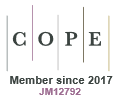CP25027Association mapping of phenological traits and major regulatory genes (Vrn and Ppd) in Iranian wheat germplasm
Wheat phenology plays a crucial role in its adaptation to different environments. This study focused on identifying the genetic bases of phenological traits to assess potential quantitative trait loci and discover genes that contribute to phenological stages. These findings provide valuable insights into the genetic bases of phenological characteristics in a diverse Iranian wheat varieties and landraces. These genes and pathways could be applied in future breeding programs unlock molecular response against wheat adaptation and selection of suitable genotypes.





